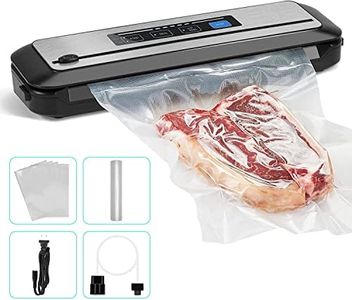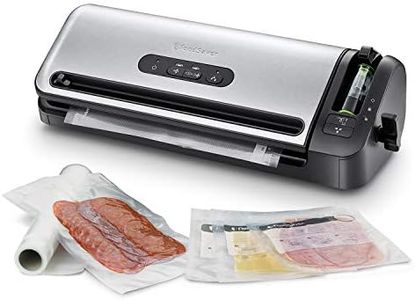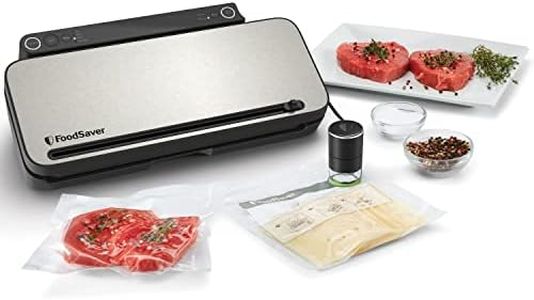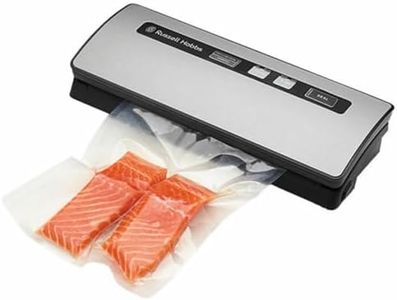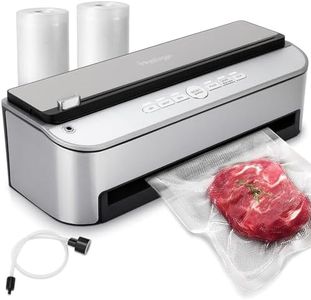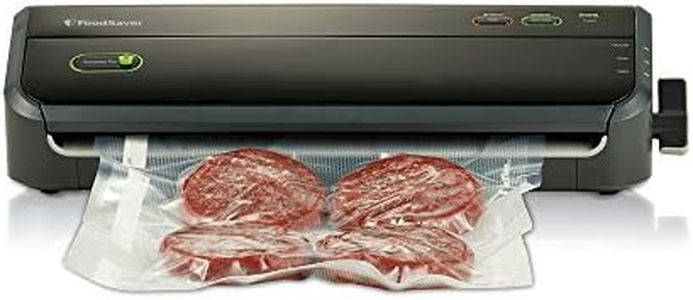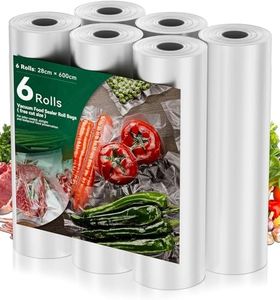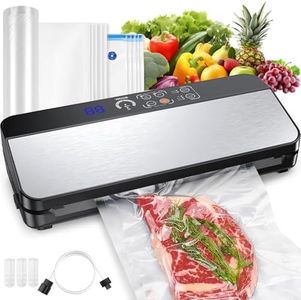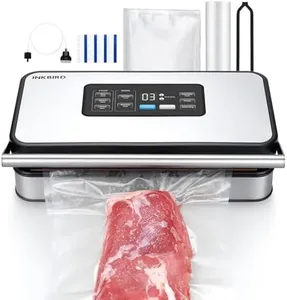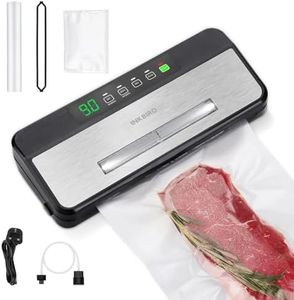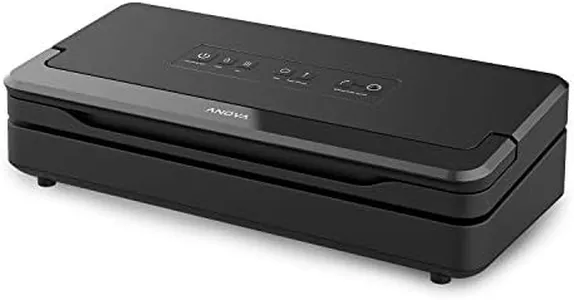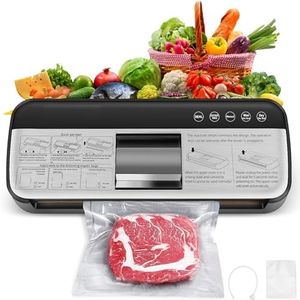We Use CookiesWe use cookies to enhance the security, performance,
functionality and for analytical and promotional activities. By continuing to browse this site you
are agreeing to our privacy policy
10 Best Food Vacuum Sealers
From leading brands and best sellers available on the web.Buying Guide for the Best Food Vacuum Sealers
Choosing a food vacuum sealer can take your food preservation game to the next level. These machines work by removing air from a bag or container and sealing it tight, which helps slow down spoilage, prevent freezer burn, and keep food fresh for longer. When picking the best food vacuum sealer for your needs, it's important to understand the main features and specifications, so you find one that matches how you plan to use it. Think about things like the type and amount of food you usually seal, how often you plan to use the machine, and the available space in your kitchen.Sealing Method (Suction vs. Chamber)The sealing method refers to how the vacuum sealer removes air from the bag before sealing it. There are two main types: suction (external) sealers and chamber sealers. Suction sealers pull air directly out of the open end of a specially designed bag, making them compact and easy for most home users. They work well for solid foods and casual use. Chamber sealers, on the other hand, enclose the whole bag inside the machine and remove air from the entire chamber. This method is more powerful, handles liquids and moist foods better, and is preferred for heavy-duty or frequent use. To choose which is right for you, consider if you plan to seal a lot of liquids or if you want a quick, space-saving tool for home use.
Sealing WidthSealing width refers to the maximum width of the bag that the machine can seal in one go. Typical household sealers handle bags between 8 and 12 inches wide, while some commercial options go wider. A wider sealing width allows you to work with bigger bags, which is handy for bulk portions or large cuts of meat. For most home kitchens, a standard width is sufficient, but if you often freeze large items, look for a sealer with a wider sealing capability.
Operation Modes (Manual vs. Automatic)Operation modes dictate how much you need to interact with the machine during sealing. Manual modes let you control vacuum strength and sealing time, which is great if you want to customize for delicate foods or special requirements. Automatic modes handle everything at the press of a button, making the process easier and more consistent, especially for beginners or quick sealing jobs. Choose manual if you're dealing with a lot of specialty foods, but automatic is best for fast, routine use.
Moist/Dry Food SettingsMoist/dry food settings allow the machine to adjust its sealing method for different types of food. Dry settings work well for solid, non-wet items like nuts or grains, while moist settings help handle foods with juices, like marinated meats or cooked dishes. This feature prevents improper seals and potential leaks. If you plan to preserve a variety of foods, especially juicy items, look for a vacuum sealer with these adjustable settings.
Ease of CleaningEase of cleaning determines how simple it is to keep your vacuum sealer hygienic. Machines with removable drip trays or sealing bars make it easy to clean up any spills or food particles, while others require disassembly or careful wiping. Simplified cleaning is essential if you use the sealer often or handle messy foods. Think about how often you'll need to clean up and choose a model with user-friendly maintenance features.
Bag CompatibilityBag compatibility refers to the types and brands of bags that work with your vacuum sealer. Some machines require proprietary, specially-textured bags for effective sealing, while others can use generic or even rolls that you cut to size. Broad compatibility offers greater convenience and potential savings. If you want maximum flexibility or plan to buy bags in bulk, check that the sealer can accept different types or brands of bags.
Size and StorageThe size of the vacuum sealer affects how easily you can store it in your kitchen and how much counter space it takes up. Compact sealers are easy to move and stash away, making them perfect for occasional use or small apartments. Larger models might offer more powerful features but need more storage space. Consider your kitchen layout and how often you’ll use the machine when deciding on the right size for you.
